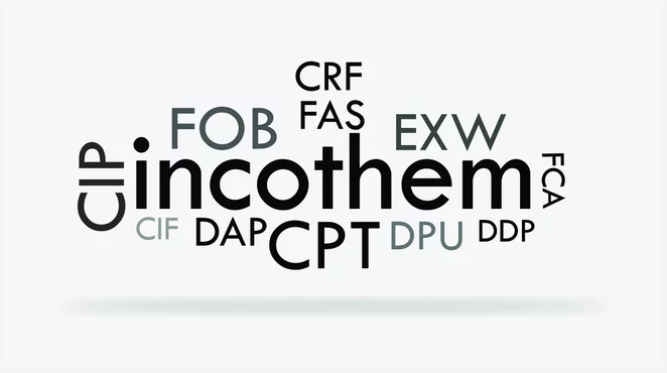Incoterms (International Commercial Terms) are a set of international rules that standardize the terms of trade, defining the responsibilities between buyers and sellers in international transactions. The journey of Incoterms’ formation and development reflects the global need to unify language and standards in commerce. Here’s an in-depth look at the evolution and development of Incoterms.
1. The Formation of Incoterms
Before Incoterms Existed:
Before the introduction of Incoterms, different countries and regions had their own trade rules, often leading to misunderstandings and disputes when goods crossed borders. Each country could have different rules regarding delivery, risk, and costs, creating confusion in international trade. Traders struggled with inconsistent interpretations of key responsibilities like shipping, handling, and risk management.
The Creation of the International Chamber of Commerce (ICC):
In response to the growing complexities of global trade, the International Chamber of Commerce (ICC) was established in 1919. One of the ICC’s main goals was to facilitate global commerce by addressing these challenges. ICC recognized the need for a unified set of rules to govern international commercial transactions and resolve disputes arising from differing trade terms and interpretations across countries.

2. The Introduction of Incoterms 1936
The first version of Incoterms was published in 1936 by the ICC, aimed at standardizing and clarifying delivery terms in international trade. This original version included six main trade terms:
-
FOB (Free On Board)
-
FAS (Free Alongside Ship)
-
CIF (Cost, Insurance, and Freight)
-
C&F (Cost and Freight) (later renamed CFR)
-
EXW (Ex Works)
-
FOR (Free On Rail) (now obsolete)
These terms were mostly designed for maritime shipping, which dominated international trade at the time.
3. The Evolution of Incoterms Over the Years
Incoterms have undergone several revisions to keep pace with changes in trade practices and logistics. Each revision aimed to address new challenges and improve clarity in the responsibilities and obligations between sellers and buyers.
Incoterms 1953:
This version introduced terms applicable to rail transport, such as DAF (Delivered at Frontier), acknowledging the growing importance of land-based transport.
Incoterms 1967:
With the rise of containerization and multimodal transport, FOB Airport was introduced to cover air freight, though this term was later eliminated in favor of more general terms that apply across multiple modes of transportation.
Incoterms 1976:
With increasing use of containers, FRC (Free Carrier) was added to address situations where goods are delivered to a carrier in locations other than ports, catering to multimodal transport logistics.
Incoterms 1980:
This version introduced FCA (Free Carrier) to replace specific terms for rail and air transport, providing a more flexible rule for goods delivered to any carrier at a specified location, reflecting the growing complexity of international trade.
Incoterms 1990:
As logistics and shipping became more specialized, new terms like CIP (Carriage and Insurance Paid To) and CPT (Carriage Paid To) were added, covering multimodal transport scenarios and simplifying logistics management.
Incoterms 2000:
This version streamlined many terms and clarified responsibilities regarding transportation costs and insurance, making Incoterms easier to use and more aligned with modern shipping practices.
Incoterms 2010:
One of the biggest changes came in this edition, reducing the number of terms from 13 to 11. Older terms like DAF (Delivered at Frontier) and DDU (Delivered Duty Unpaid) were replaced by newer terms such as DAT (Delivered at Terminal) and DAP (Delivered at Place) to reflect modern logistics practices.
Incoterms 2020:
The latest revision was released on January 1, 2020, updating terms to reflect current global trade trends. The most significant change was the replacement of DAT with DPU (Delivered at Place Unloaded). This version also clarified insurance responsibilities, especially under CIF and CIP, to match modern risk management practices.
4. Factors Driving the Development of Incoterms
Globalization of Trade: As international trade expanded and countries became more interconnected, Incoterms needed to evolve to address new transportation methods, markets, and regulations.
Advancements in Logistics Technology: With the rise of containerization and multimodal transport (combining different types of transport, like air, sea, and land), Incoterms had to be updated to reflect these technological and logistical innovations.
The Growing Role of Logistics Providers: The emergence of professional logistics and transport companies necessitated the inclusion of terms that allowed for third-party involvement in the transportation and delivery of goods.
5. The Importance and Role of Incoterms Today
Reducing Risk and Disputes: Incoterms help minimize misunderstandings in trade transactions, thereby reducing disputes over shipping, insurance, and delivery responsibilities.
Standardization in Global Trade: Incoterms provide a common framework that companies across the world can use to easily understand their responsibilities and obligations in a transaction, regardless of the languages or legal systems involved.
Supporting Supply Chain Management: Incoterms clearly define who is responsible for what at each stage of the transportation process, helping companies and logistics providers manage their supply chains more effectively.

6. Details of 11 conditions of Incoterms 2020
► EXW (Ex Works)
► FCA (Free Carrier)
► CPT (Carriage Paid To)
► CIP (Carriage And Insurance Paid To)
► DAP (Delivered At Place)
► DPU (Delivered At Place Unloaded)
► DDP (Delivered Duty Paid)
► FAS (Free Alongside Ship)
► FOB (Free On Board)
► CFR (Cost And Freight)
► CIF (Cost, Insurance and Freight)
Conclusion
Incoterms have developed over the decades to accommodate the shifting dynamics of global trade, from simple maritime shipping rules in 1936 to complex multimodal transport agreements in the present day. Each update to the Incoterms reflects changes in the global economy, technology, and logistics, ensuring that international trade continues to operate smoothly. Today, Incoterms remain an essential tool in managing risks, responsibilities, and costs in cross-border commerce, providing clarity and consistency for businesses and traders worldwide.